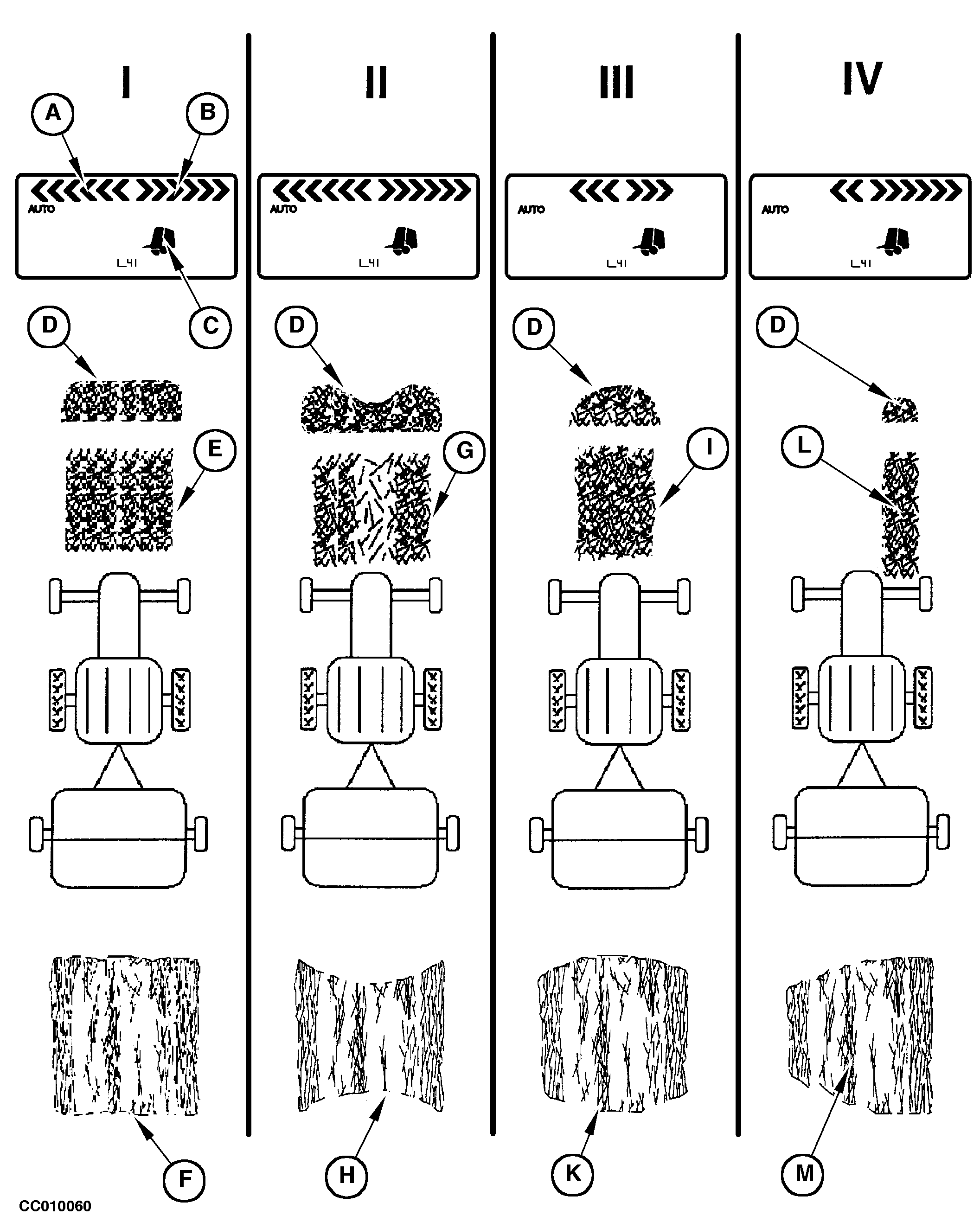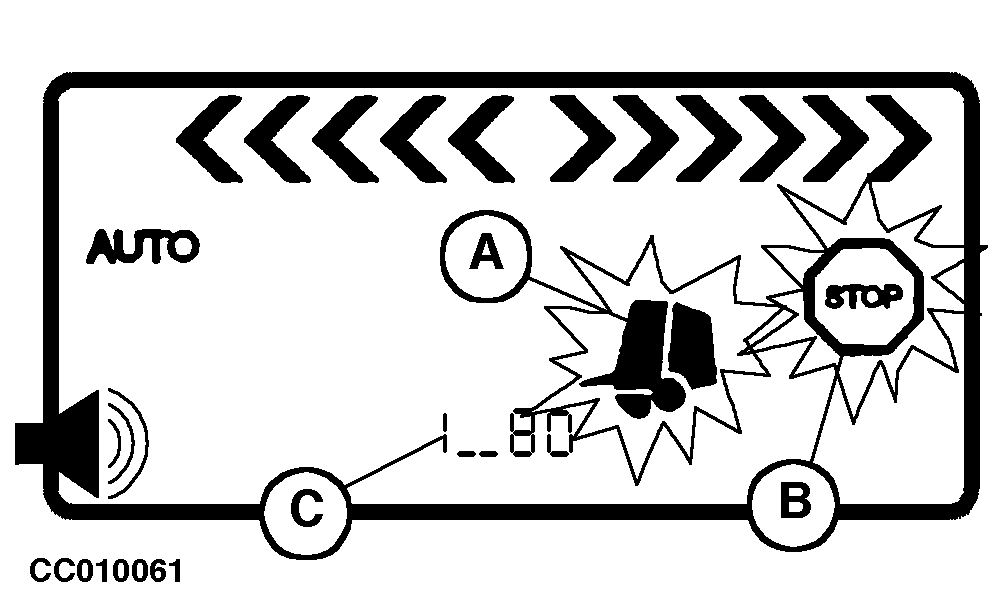Forming a Bale

|
CC,570RB003987 -19-15SEP98-1/3 |
|
|
|
|
|
Reacting to Bale Formation Arrows
Do not attempt to feed crop or twine into baler or unplug feed area while baler is running. The baler feeds material faster than you can release it. Disengage PTO and shut off engine. Operate tractor at PTO rated speed. Move selective control valve lever to close gate, then shift lever to neutral. Check that LCD screen displays the bale formation (A)-(B) and gate closed (C) pictograms. NOTE: With baler empty and gate closed, three arrows on each side are normally displayed. If one of the bale formation pictograms is missing, check for proper relevant bale shape sender connection. Engage PTO, then start to feed the baler as described in "Feeding The Material" in "Operating The Baler - General Purposes" Section. Depending on windrow cross section (D), reaction of bale formation arrows (A)-(B) will differ. During baling, bale formation pictograms (A)-(B) can show from 1 to 6 arrows both. |
I- When windrow (E) has uniform density and the width is the same as baler pickup, best shaped bales (F) are formed. Weaving is not necessary to keep full range of bale formation arrows. If this is not practical, create windrows up to one-half the width of the pickup and follow the bale formation arrows. II- If full-width windrow (G) is heavy on the outside edges and light at the center, an hourglass shaped bale (H) will be formed even though full range of bale formation arrows are displayed. If possible, weaving back and forth across windrow will help fill the middle of the bale. Otherwise, proper windrow formation (raking, etc.) may be needed. III- If windrow (I) is wider than one-half the pickup width, but less than full pickup width, full range of bale formation arrows will not be displayed and barrel shaped bales (K) will be formed. A well-shaped bale cannot be formed with this windrow width. IV- If narrow windrow (L) is baled without weaving back and forth, a cone shaped bale (M) will be formed. Weave back and forth across windrow to keep full range of bale formation arrows, if possible. |
CC,570RB003987 -19-15SEP98-2/3 |
|
Weaving to the Right or to the Left
The basic rule to correctly form the bale is to drive to the side where there are the most arrows to bring more material on the opposite side of the pickup. During the bale formation, the operator should try to keep the 5 or 6 arrows on each side so that bale is well formed prior to the wrapping cycle. NOTE: When the number of arrows is growing on one side of the LCD screen, it will decrease on the opposite side informing the operator when he should weave over the windrow. Weaving too often or too slowly puts too much crop in the center of the bale and should be avoided. Continue to feed material up to the desired bale diameter, then wrap the bale as described under "Wrapping a Bale" in this Section. IMPORTANT: During bale formation, oversize (A) and stop indicator (B) pictograms should not flash as well as a continuous sound alarm not be heard. If the automatic wrapping mode has been chosen, the wrapping cycle will start few seconds after the warning message. Frequent baling of oversized bales can lead to premature failures. Check and determine cause of problem. NOTE: During the bale formation, digits (C) inform the operator about the real bale diameter. NOTE: On 590 only, if the gate opens accidentally during bale formation, pictograms (B) and (D) will flash and an intermittent sound alarm will be heard. Check and determine cause of problem. |
|
CC,570RB003987 -19-15SEP98-3/3 |
 CAUTION:
DO NOT TAKE CHANCES! To avoid injury or death by being pulled into the machine:
CAUTION:
DO NOT TAKE CHANCES! To avoid injury or death by being pulled into the machine:

